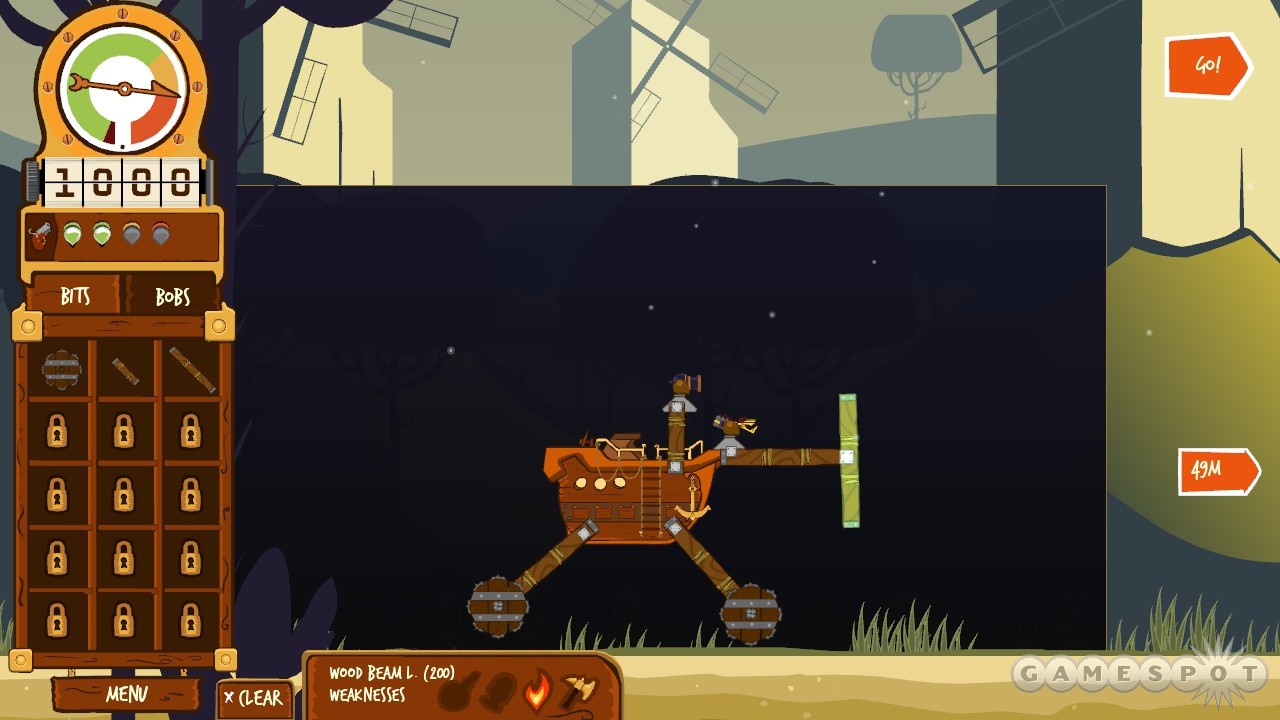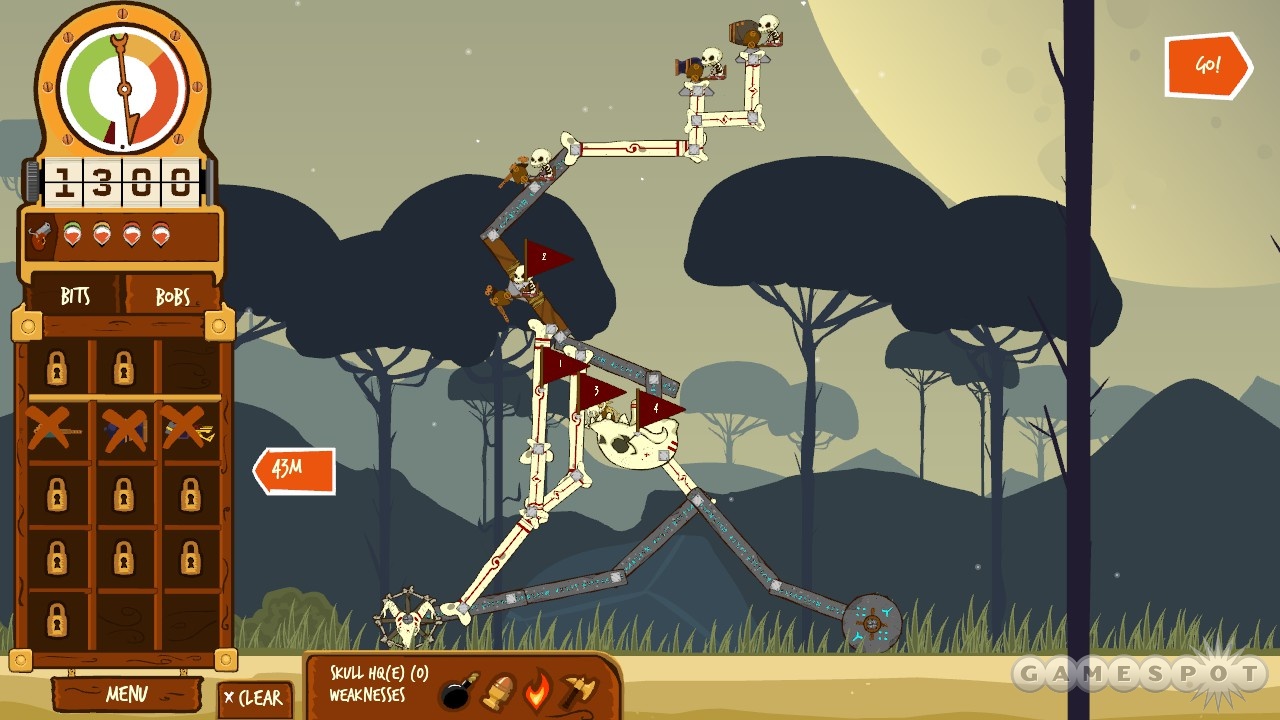Remember the Erector Set? You got a box full of parts and you could connect them to each other in various ways to form a bunch of different simple machines: pinwheels, catapults, toy cars, and so on. It was a toy that, like Legos, allowed your imagination to build other toys with it and thereby multiply its toy potential--a meta-toy, if you will. Rigonauts, a cute puzzle game from developer Engient, aims to re-create the Erector Set experience, only with guns and bad guys. Since blowing stuff up is often just as fun as creating it, this seems like a natural evolution, but some questionable design decisions, a confusing user interface, and a general lack of refinement and scope leave Rigonauts with feet of clay.

The premise is that you are the commander of a ship full of "crewlins" (an amalgamation of crew and goblin) trying to escape from your evil overlords. You land on an island and convert your ship to landworthiness, and then face off against an increasingly baroque series of opponent ships. The key gameplay element is that as you progress, you unlock new weapons and tools, as well as new construction materials to build your ship with. Combat is entirely automated, like winding up a couple of toys and letting them bang into each other, so the key to successfully defeating your opponent is planning in the pre-combat stage. This means Rigonauts is much more puzzle game (figuring out the "gimmick" to an enemy is paramount) than action game, although there are multiple solutions to a puzzle that might work with enough luck.
Before a fight, you get a look at the enemy ship (or ships) that you'll be squaring off against, and you can see which pieces of the ships have what weaknesses, select guns based on that, and then prioritize an order of targeting for your gunners. You also get the chance to place guns on your ship, align them, and improve the pieces constructing your ship for the purposes of armor or balance. As you win battles, you unlock new guns, new ship parts, and more-complicated enemies to destroy, albeit at a painstakingly slow pace. Levels are challenging, but the lack of direct control and the many seemingly random factors (how your ship's physics behave in response to a stimulus, for example) mean that a good portion of success is dependent on luck.

All that said, there's a Zen-like satisfaction to watching your creations trundle or float into combat and seeing whether your cockamamie, Rube Goldberg-esque ideas will actually win the day. Sometimes, this can require you to spend a long time watching two large ships pick each other apart piece by piece, but thankfully you can stop and instantly restart if you see a battle is a fait accompli. You get a star rating based on your performance: use fewer guns and parts, receive more stars.
Unfortunately, that's not the only incentive to limit your parts usage. The interface for picking pieces and installing them onto your ship and guns has clearly been designed with touch screens in mind, and is unintuitive and very limited for PC controls. There are no hotkeys for selecting or rotating pieces, for instance, and there's no way to flip pieces around--an issue if you want a rear-firing gun. Guns turn around and fire to the rear if there is an enemy there, but it's not easy to set up clear lines of fire when the guns can't be rotated in the design stage. There's also no way to tell if your structure is going to hold together, or even retain balance, in the design portion of the game. Pieces float in space when you're hooking them together, but when you activate an attack, gravity is engaged: suddenly guns drop through unnoticed gaps and wheels fail to align properly.

Speaking of things you can't tell, Rigonauts offers nothing in the way of tooltips or helpful side information on pieces or weapons. Some things are fairly self-explanatory, like what a flamethrower does, but more often than not, you have no idea if you ought to install a new piece or go with the previous model, because no information for comparison is given. Sure, you can tell what's weak against what weapon, but beyond that, nothing. Should you go with shock absorbers for the next map, or stick with rigid legs? Do iron wheels roll more slowly than bone wheels? Rigonauts fails to equip you with the information you need.
Beyond its core design foibles, though, Rigonauts doesn't feel finished. The text between missions is rife with typos and translation snafus, the screen won't resize to fit a decent-sized monitor, there's no music to speak of, and the sound effects are tinny and unimpressive. And that all adds up to an uneven gaming experience. Realized as a bunch of physical, interconnectable parts that you could play with on your bedroom floor, Rigonauts would probably be one of Toys "R" Us' best-sellers, but as a video game, not so much. The core concept is interesting, but the execution fails to make it wholly satisfying.